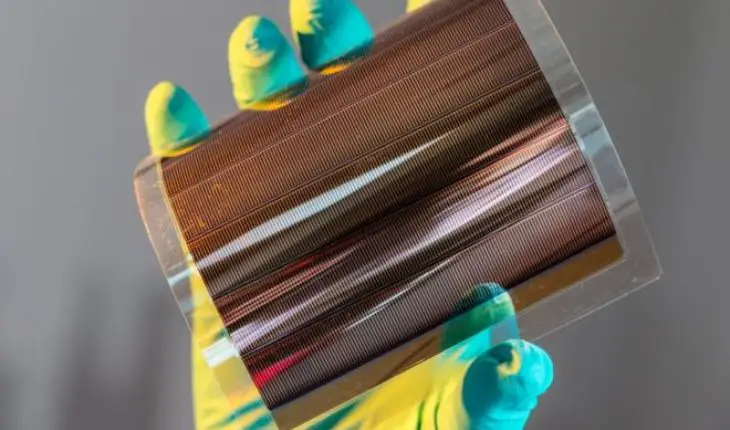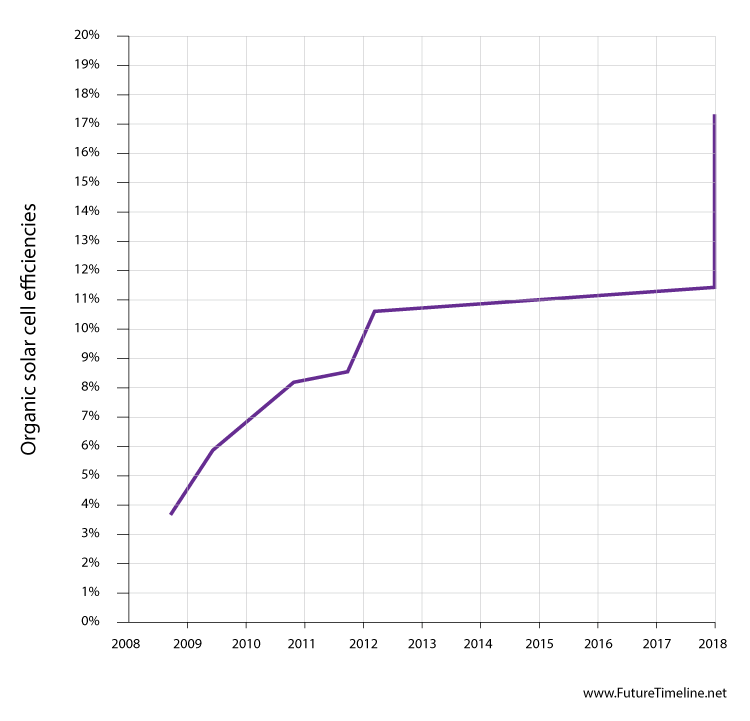
15th August 2018 New record efficiency for organic photovoltaic cells Researchers in China have established a major new record for organic photovoltaic cells, boosting their maximum efficiency to 17.3 percent.
There are many different types of solar power. Most people are familiar with flat, silicon-based panels, which are the preferred choice for manufacturers and are generally the most efficient at converting sunlight into electricity. The raw material is abundant (accounting for 15% of the Earth's mass) and the manufacturing infrastructure is well-established. Silicon-based inorganic solar panels have a number of downsides, however. They are composed of thick, rigid sheets that require fixed installation points. They are also costly and energy-intensive to make, with toxic waste created during their production. In recent years, alternative designs have begun to emerge based on new and different materials with their own unique properties. Organic solar cells incorporate carbon and plastic into their structure, offering advantages over conventional inorganic cells. Although their efficiencies are lower, they can be extremely thin, lightweight and flexible, as well as cheaper, easier to produce and less toxic. They can also be made transparent or semi-transparent. These various features could provide some interesting applications in the future. They might be incorporated into window panes, for example, or even printed into sunglasses, bags, clothing and other wearable items. In developing countries, where many roofs are too fragile or otherwise unsuited to heavier silicon panels, they would be a more practical alternative, improving access to electricity. The low efficiency of organic solar cells has prevented them from achieving widespread use. For several years, the best research cell efficiencies have been hovering around 11%. Some researchers had even thought that organic solar cells would never reach higher than 15%. This month, however, scientists in China have demonstrated an organic solar cell with maximum efficiency of 17.3% – a major boost for this promising technology. Furthermore, they believe that efficiencies of 25% are now technically possible, a goal that might be achieved in the next 5-10 years, looking at the current trend.
The team's breakthrough is based on a tandem cell design, meaning it is multi-layered. Each of these active materials can absorb different wavelengths to capture a wider range of light, thus generating more current. The researchers used a "semi-empirical" approach with a combination of (a) computer models and (b) extrapolation of performance based on experimental data. This allowed them to predict the best combination of materials that would work together and form a "rating" for each result. Previous designs for tandem organic cells have failed to tap into the abundant solar energy of the near-infrared range, but the team's final configuration addressed this issue. They included a non-fullerene acceptor molecule known as O6T-4F, able to work better at this wavelength. They then combined that with a layer containing a relatively new electron acceptor, called F-M for short, which the team had earlier developed. This material was shown to be an excellent match for its electrical properties and could absorb visible light. "This latest achievement has made organic solar cells one step closer to industrialisation," said Professor Chen Yongsheng, at Nankai University. "We also conducted preliminary tests on the life of the battery and found, after 166 days of experimentation, efficiency is only reduced by 4%. We will continue to design new materials to further improve the energy conversion efficiency, carry out systematic experiments on life issues, and strive to take organic solar cells from the laboratory to practical applications as soon as possible." The breakthrough is published in the peer-reviewed journal Science.
Comments »
If you enjoyed this article, please consider sharing it:
|








